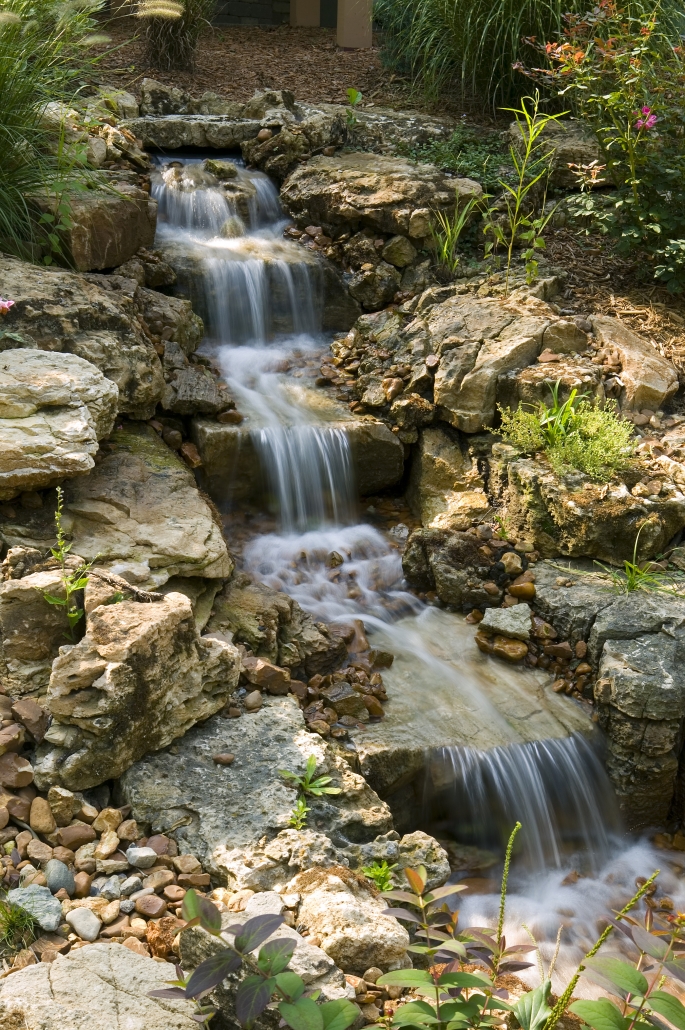Stream Installation: Design, Installation, and Maintenance
Stream installation is a popular landscaping feature that adds natural beauty and serenity to outdoor spaces. Whether you’re creating a small babbling brook or a meandering stream, proper design, installation, and maintenance are crucial for ensuring long-term success. In this comprehensive guide, we’ll delve into the essential steps involved in stream installation, from planning and design to construction and upkeep.
Section 1: Planning Your Stream Installation
Before breaking ground on your stream project, it’s essential to carefully plan and design the layout to achieve the desired aesthetic and functionality.
1.1 Site Assessment:
- Evaluate the existing landscape, including topography, soil type, and drainage patterns.
- Consider factors such as sunlight exposure, existing vegetation, and proximity to buildings or utility lines.
1.2 Design Considerations:
- Determine the desired length, width, and depth of the stream.
- Incorporate natural features such as rocks, boulders, and plantings to create a realistic and visually appealing streambed.
- Plan for proper water circulation and filtration to maintain water quality and prevent stagnation.
Section 2: Stream Installation Construction Process
Once you’ve finalized the design, it’s time to begin the construction process, which involves excavating the site, shaping the streambed, and installing the necessary components.
2.1 Excavation:
- Use heavy equipment such as excavators or skid-steer loaders to dig the stream channel according to the planned design.
- Create varying depths and contours to mimic natural stream morphology and promote water movement.
2.2 Liner Installation:
- Lay down a durable liner material such as EPDM rubber or PVC to prevent water seepage and maintain stream integrity.
- Ensure the liner is properly secured and free of wrinkles or folds to prevent leaks and ensure a smooth surface for water flow.
2.3 Rock Placement:
- Select and arrange rocks and boulders of different sizes and shapes to create a naturalistic streambed.
- Use a combination of larger rocks for structural support and smaller rocks for fill and visual interest.
2.4 Water Feature Installation:
- Install a recirculating pump and filtration system to circulate and clean the water within the stream.
- Add features such as waterfalls, cascades, or spillways to enhance the visual and auditory appeal of the stream.
Section 3: Stream Installation Maintenance and Care
Proper maintenance is essential for preserving the beauty and functionality of your stream installation over time. Regular upkeep helps prevent issues such as algae growth, debris accumulation, and liner damage.
3.1 Water Quality Management:
- Monitor water quality parameters such as pH, temperature, and oxygen levels to ensure a healthy aquatic environment.
- Perform routine water testing and adjustments to maintain optimal conditions for fish and plants.
3.2 Debris Removal:
- Remove leaves, branches, and other debris from the stream surface regularly to prevent clogging and obstruction of water flow.
- Use a skimmer net or leaf rake to skim debris from the water’s surface and a pond vacuum to remove sediment from the streambed.
3.3 Plant Care:
- Maintain aquatic plants by trimming dead foliage, dividing overgrown specimens, and fertilizing as needed.
- Choose native plants adapted to your climate and growing conditions for optimal health and resilience.
3.4 Stream Installation Equipment Maintenance:
- Inspect and clean pumps, filters, and other mechanical components regularly to ensure proper functioning and longevity.
- Replace worn or damaged parts promptly to prevent system failure and potential water leaks.
Stream installation offers a captivating way to bring the beauty and tranquility of nature into your outdoor space. By following proper planning, design, construction, and maintenance practices, you can create a stunning and sustainable stream feature that enhances your landscape for years to come. Whether you’re embarking on a DIY project or enlisting the help of professionals, careful attention to detail and ongoing care are key to the success of your stream installation.
Check out our store for all your water gardening needs! Aquascape products are Aquascape Inc. Certified.
Thanks for reading at Meyer Aquascapes! We hope you’ve enjoyed our post on garden pond design. Please leave a comment below if you liked it or have any questions. We’d love to hear from you! Thanks for stopping by!


 meyer aquascapes
meyer aquascapes